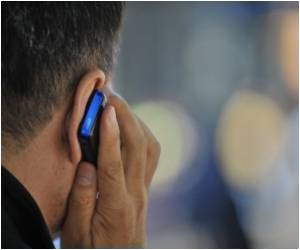Mobile phone giants have been accused of keeping the warnings about the health risks of using their handsets undercover-by keeping them buried deep inside the manual.

BlackBerry goes even further, saying customers should use their devices hands-free or keep them an inch from the body 'including the abdomen of pregnant women and the lower abdomen of teenagers'.
Again, this advice is hidden in the instruction booklet.
All other manufacturers, including Nokia and HTC, carry similar small-print warnings despite insisting that holding mobiles against the ear and head is harmless.
Health campaigners and politicians on both sides of the Atlantic are calling for clear warnings to be put on handset boxes.
"Most people have no idea about these warnings. The safety advice should be included on the boxes and far more prominently in the "getting started" section of user guides and not just in the detail at the back that hardly anyone reads," the Daily Mail quoted Alasdair Philips, of Powerwatch, an independent group which investigates the safety of mobile phones, as saying.
Advertisement
The safety advice in manuals is designed to limit so-called Radio Frequency exposure. This is said to heat body tissue and some - inconclusive - research suggests it is linked to tumours in the brain.
Advertisement
Men who carry handsets on their belt or in their pockets with the keypad facing outward will suffer higher exposure because the antenna, which is always at the back, is close to the body.
SAR - Specific Absorption Rate - is the standard industry measurement for the amount of RF energy the body absorbs.
Philips said: "When a phone has to power up, it sends high SAR power into the trunk and towards the kidneys and liver. It can be the testicles if in a trouser pocket.
"Some girls carry them in chest bags which hang just below their breasts. Breasts, eyes and testicles absorb external RF energy the most. Blood-rich organs, such as the liver, kidneys and heart are among the top energy absorbers.
"The ovaries and foetus are relatively well protected by the trunk, but it obviously makes sense to keep the handset away from those areas, especially the foetus in the first six months."
Michael Milligan of the Mobile Manufacturers Forum said: "A mobile phone can always be used up against the head without the need for this separation, because phones are designed to have the antenna far enough away from the head when making a call."
"Every mobile phone model is tested to make sure they meet national and international exposure limits for exposure to Radio Frequency emissions, before they can be sold in the UK or elsewhere," he added.
Source-ANI










